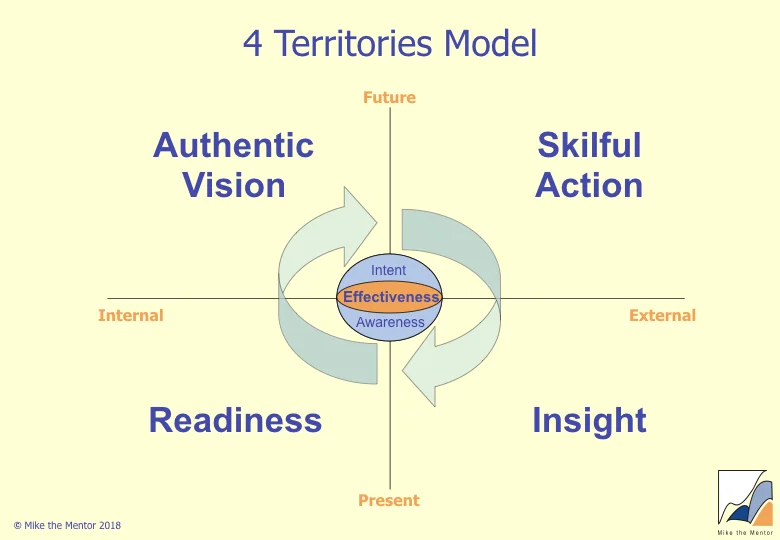Decision Making in Multiple Contexts
/One of the four territories of leadership described in the Change Model is Insight. Insight involves seeing the world clearly, discerning the key trends, and anticipating what the future might hold. The Cynefin framework ("A Leader's Framework for Decision Making", Harvard Business Review November 2007) provides leaders who understand that the world is often irrational and unpredictable with an approach to developing better Insight. (Cynefin, pronounced ku-nev-in, is a Welsh word that signifies the multiple factors in our environment, our culture and our personal history that influence us in ways we can never fully know.)
The Cynefin framework sorts the issues facing leaders into five contexts defined by the nature of the relationship between cause and effect. Four of these - simple, complicated, complex, and chaotic - require leaders to diagnose situations and to act in contextually appropriate ways. The fifth - disorder - applies when it is unclear which of the other four contexts is predominant.
In this domain effective leaders lead by setting clear boundaries within which the system can self-regulate, carrying out low risk experiments to test new approaches and products, encouraging dissent and diversity, being sensitive to emergence, tolerating failure, setting the stage and stepping back, allowing patterns to emerge, and using large group methods to initiate wide-ranging discussions and explorations.
Simple Contexts - sense, categorize, and respond - The Domain of Best Practice - Decision making here is straightforward. Look at the facts, categorise them based on previous experience, and respond according to established best practice.
Complicated Contexts - sense, analyze, and respond - The Domain of Good Practice - Complicated systems are more intricate Simple systems - they have many more parts, but there is still a clear link between cause and effect. So it is possible to predict how these parts will interact together, though it is no longer possible to assign situations to one of a limited number of categories. Therefore leaders must access experts who are able to analyze these more complex situations and then make decisions in the face of potentially conflicting expert advice.
Complex Contexts - probe, sense, and respond - The Domain of Emergent Practice - In Simple and Complicated contexts it is possible to decide how to respond merely by observing the system - because these are essentially static systems. Complex Contexts however are dynamic and can only be understood by interacting with them in some way and noticing the impact this has. In these emergent systems we need to find ways to allow the path forward to reveal itself by experimenting, prototyping and exploring - thus we must first probe, then sense, then respond. Many of the significant decisions leaders have to make fall into this category because they involve:
nonlinear interactions where minor changes can produce disproportionately large fluctuations
dynamic change with emergent solutions
evolution that is irreversible
non-predictability since, though the system may with hindsight appear to be ordered, we still cannot forecast or predict what will happen in advance.
Chaotic Contexts - act, sense, and respond - The Domain of Novel Practice - In Chaotic contexts no patterns or structure exists and there is no link between cause and effect. Here the leader's job is to impose order and transform the situation from chaos to complexity. Rudy Giuliani demonstrated exceptional effectiveness in dealing with this context when, on 9/11, he dealt with the extreme chaos unleashed on New York by imposing directives and taking action to restore order.
Chaos is not all bad - the chaotic domain is also the best place to impel innovation as people can be more open to dramatically changing their habitual ways of thinking and acting here than in the other contexts. Indeed, creating limited chaos and the moment you encounter a crisis directly managing the crisis can create rapid innovation.
The fifth context - disorder - applies when multiple contexts jostle for prominence. The way to deal with this is to break the situation down into its constituent contexts and apply the appropriate approach for each element.


